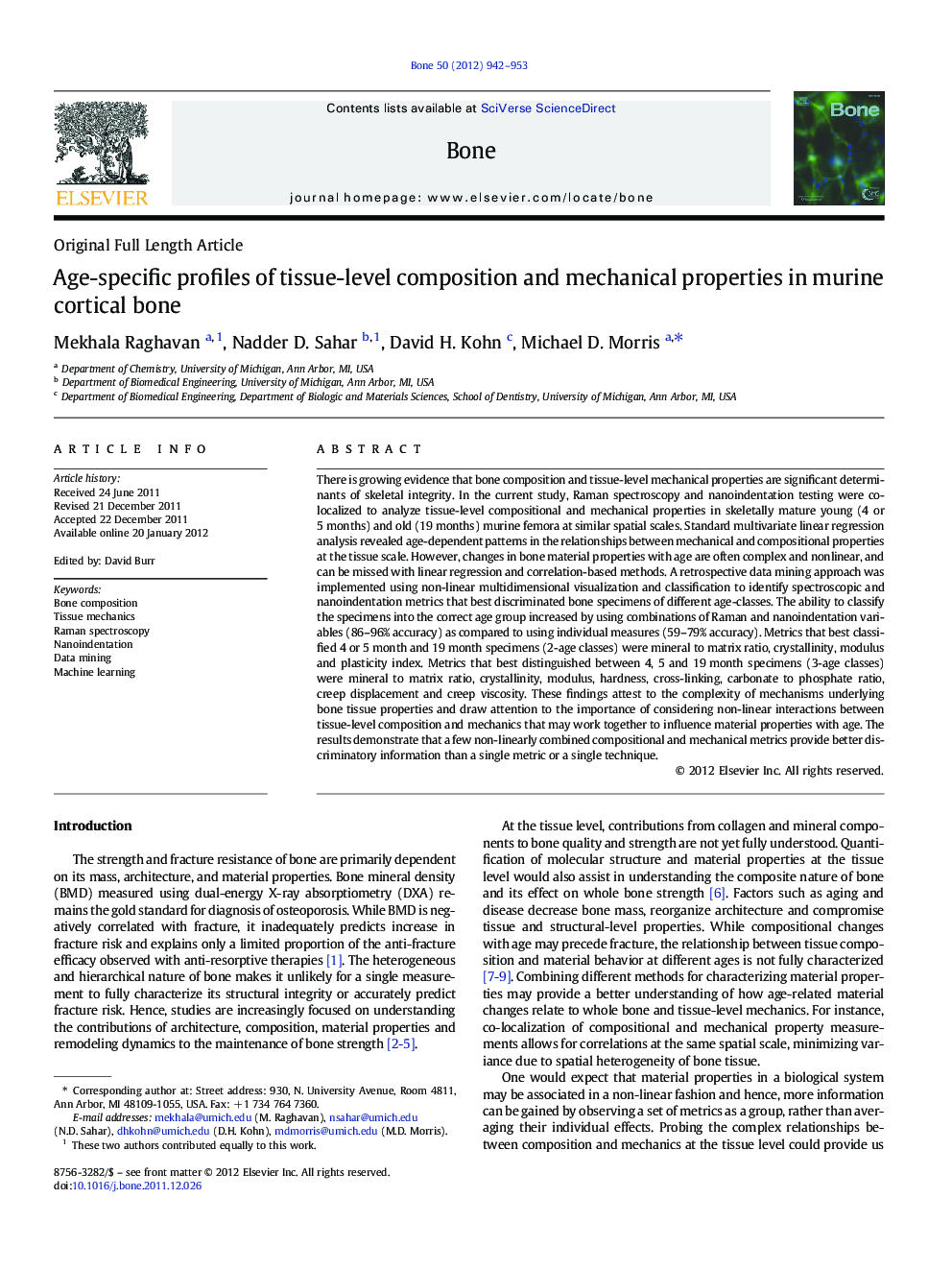| Article ID | Journal | Published Year | Pages | File Type |
|---|---|---|---|---|
| 2779580 | Bone | 2012 | 12 Pages |
There is growing evidence that bone composition and tissue-level mechanical properties are significant determinants of skeletal integrity. In the current study, Raman spectroscopy and nanoindentation testing were co-localized to analyze tissue-level compositional and mechanical properties in skeletally mature young (4 or 5 months) and old (19 months) murine femora at similar spatial scales. Standard multivariate linear regression analysis revealed age-dependent patterns in the relationships between mechanical and compositional properties at the tissue scale. However, changes in bone material properties with age are often complex and nonlinear, and can be missed with linear regression and correlation-based methods. A retrospective data mining approach was implemented using non-linear multidimensional visualization and classification to identify spectroscopic and nanoindentation metrics that best discriminated bone specimens of different age-classes. The ability to classify the specimens into the correct age group increased by using combinations of Raman and nanoindentation variables (86–96% accuracy) as compared to using individual measures (59–79% accuracy). Metrics that best classified 4 or 5 month and 19 month specimens (2-age classes) were mineral to matrix ratio, crystallinity, modulus and plasticity index. Metrics that best distinguished between 4, 5 and 19 month specimens (3-age classes) were mineral to matrix ratio, crystallinity, modulus, hardness, cross-linking, carbonate to phosphate ratio, creep displacement and creep viscosity. These findings attest to the complexity of mechanisms underlying bone tissue properties and draw attention to the importance of considering non-linear interactions between tissue-level composition and mechanics that may work together to influence material properties with age. The results demonstrate that a few non-linearly combined compositional and mechanical metrics provide better discriminatory information than a single metric or a single technique.
► Mechanical consequence of bone compositional changes are age-dependent. ► Difficult to assume linearity of the effects of compositional changes. ► Non-linear interdependence between these properties assessed as a function of age. ► Single measures insufficiently classify how aging manifests itself at tissue-level. ► Combined Raman and nanoindentation measures improve classification.
